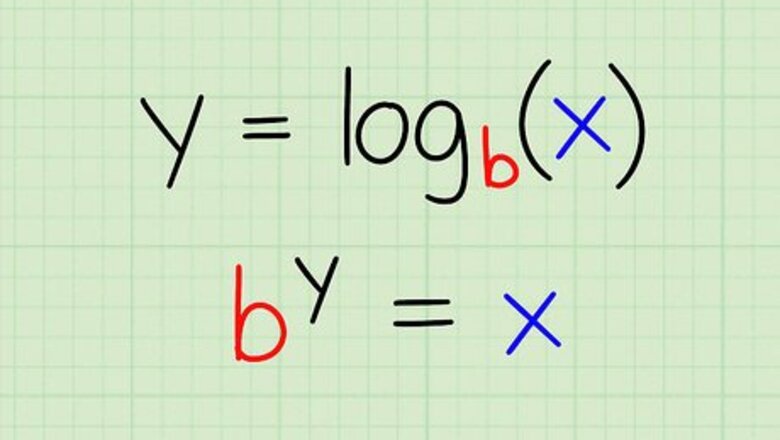
views
Steps
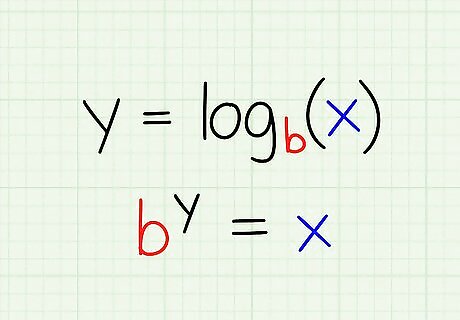
Know the logarithm definition. Before you can solve logarithms, you need to understand that a logarithm is essentially another way to write an exponential equation. It's precise definition is as follows: y = logb (x) If and only if: b = x Note that b is the base of the logarithm. It must also be true that: b > 0 b does not equal 1 In the same equation, y is the exponent and x is the exponential expression that the logarithm is set equal to.

Look at the equation. When looking at the problem equation, identify the base (b), exponent (y), and exponential expression (x). Example: 5 = log4(1024) b = 4 y = 5 x = 1024
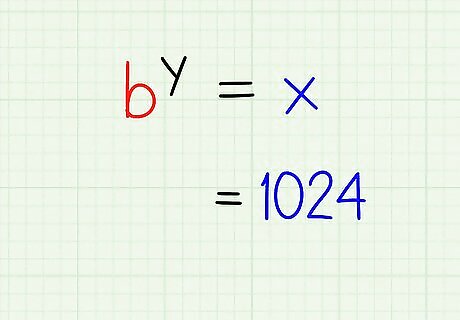
Move the exponential expression to one side of the equation. Set the value of your exponential expression, x, to one side of the equal sign. Example: 1024 = ?
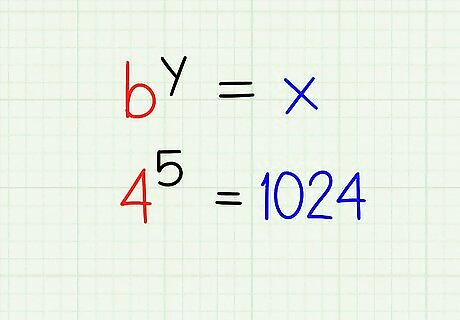
Apply the exponent to the base. The value of your base, b, needs to be multiplied by itself by the amount of times indicated by your exponent, y. Example: 4 * 4 * 4 * 4 * 4 = ? This could also be written as: 4
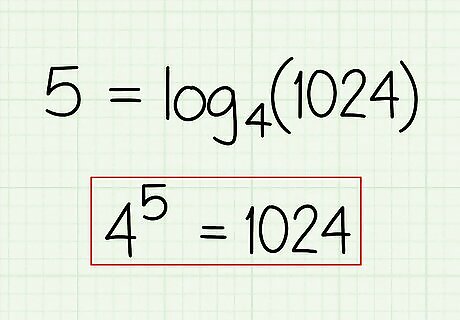
Rewrite your final answer. You should be able to rewrite the logarithm as an exponential expression now. Verify that your answer is correct by making sure that both sides of the equation are equal. Example: 4 = 1024
Method One: Solve for X
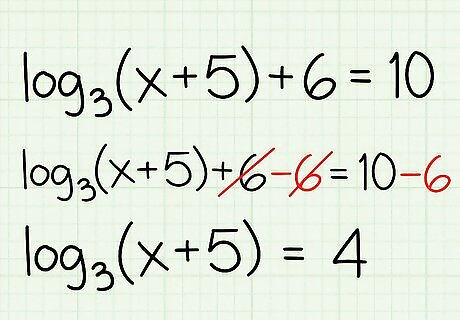
Isolate the logarithm. Use inverse operations to move any part of the equation that is not part of the logarithm to the opposite side of the equation. Example: log3(x + 5) + 6 = 10 log3(x + 5) + 6 - 6 = 10 - 6 log3(x + 5) = 4
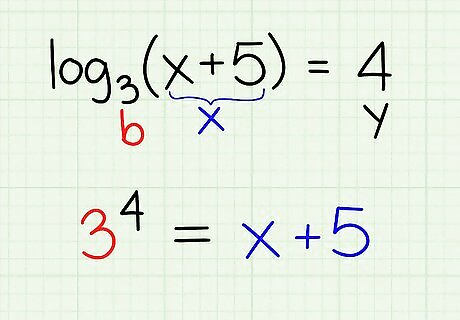
Rewrite the equation in exponential form. Using what you now know about the relationship between logarithms and exponential equations, break the logarithm apart and rewrite the equation in a simpler, solvable exponential form. Example:log3(x + 5) = 4 Comparing this equation to the definition [y = logb (x)], you can conclude that: y = 4; b = 3; x = x + 5 Rewrite the equation so that: b = x 3 = x + 5
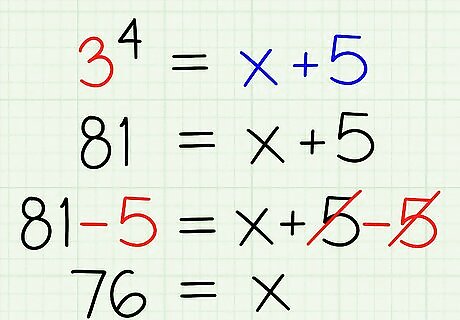
Solve for x. With the problem simplified into a basic exponential equation, you should be able to solve it as you would solve any exponential equation. Example: 3 = x + 5 3 * 3 * 3 * 3 = x + 5 81 = x + 5 81 - 5 = x + 5 - 5 76 = x
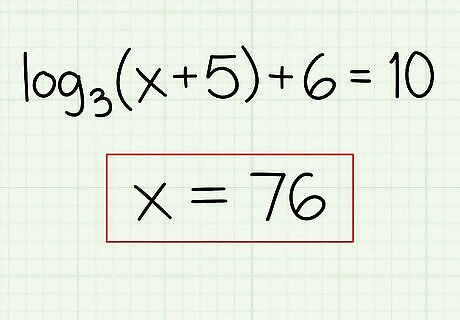
Write your final answer. The answer you got when solving for x is the solution to your original logarithm. Example: x = 76
Method Two: Solve for X Using the Logarithmic Product Rule[3] X Research source [4] X Research source
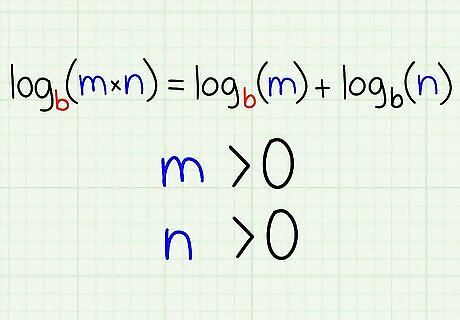
Know the product rule. The first property of logarithms, known as the "product rule," states that the logarithm of a multiplied product equals the sum of the logarithms of both factors. Written in equation form: logb(m * n) = logb(m) + logb(n) Also note that the following must be true: m > 0 n > 0
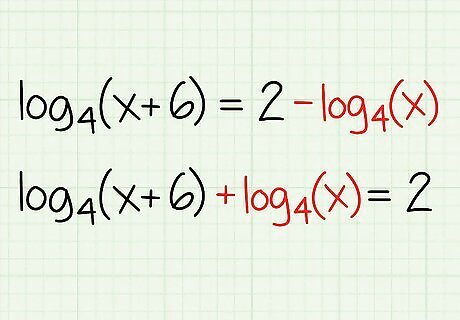
Isolate the logarithm to one side of the equation. Use inverse operations to shift the parts of the equation around so that all logarithms are on one side of the equation while all other elements are on the opposite side. Example: log4(x + 6) = 2 - log4(x) log4(x + 6) + log4(x) = 2 - log4(x) + log4(x) log4(x + 6) + log4(x) = 2
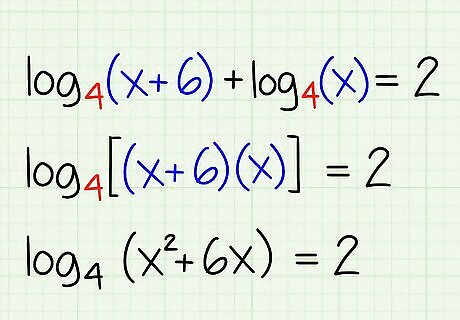
Apply the product rule. If there are two logarithms added together in the equation, you can use the product rule to combine the two logarithms into one. Example: log4(x + 6) + log4(x) = 2 log4[(x + 6) * x] = 2 log4(x + 6x) = 2
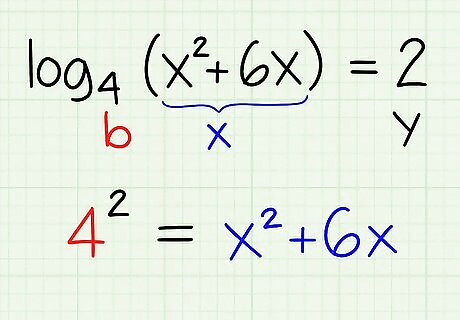
Rewrite the equation in exponential form. Remember that a logarithm is just another way to write an exponential equation. Use the logarithm definition to rewrite the equation in its solvable form. Example: log4(x + 6x) = 2 Comparing this equation to the definition [y = logb (x)], you can conclude that: y = 2; b = 4 ; x = x + 6x Rewrite the equation so that: b = x 4 = x + 6x
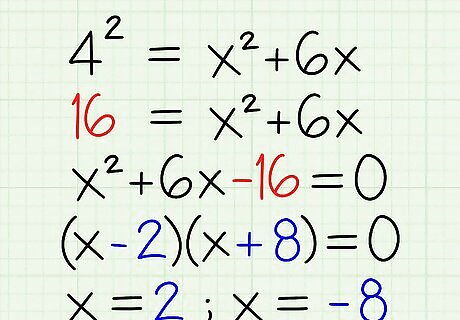
Solve for x. Now that the equation has become a standard exponential equation, use your knowledge of exponential equations to solve for x as you usually would. Example: 4 = x + 6x 4 * 4 = x + 6x 16 = x + 6x 16 - 16 = x + 6x - 16 0 = x + 6x - 16 0 = (x - 2) * (x + 8) x = 2; x = -8
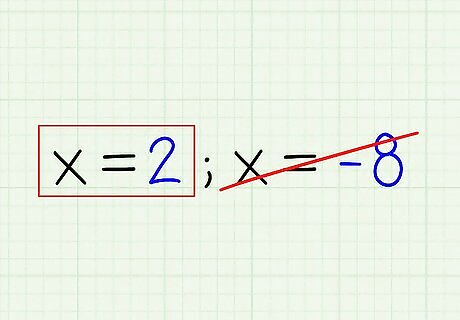
Write your answer. At this point, you should have the solution for the equation. Write it down in the space provided for your answer. Example: x = 2 Note that you cannot have a negative solution for a logarithm, so you can discard x - 8 as a solution.
Method Three: Solve for X Using the Logarithmic Quotient Rule[5] X Research source
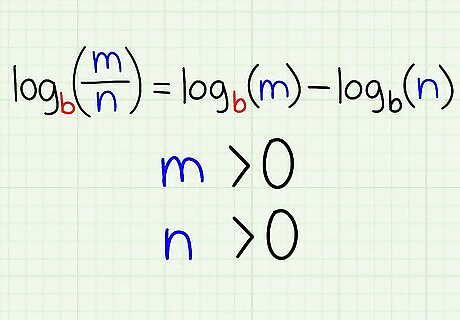
Know the quotient rule. According to the second property of logarithms, known as the "quotient rule," the logarithm of a quotient can be rewritten by subtracting the logarithm of the denominator from the logarithm of the numerator. Written as an equation: logb(m / n) = logb(m) - logb(n) Also note that the following must be true: m > 0 n > 0
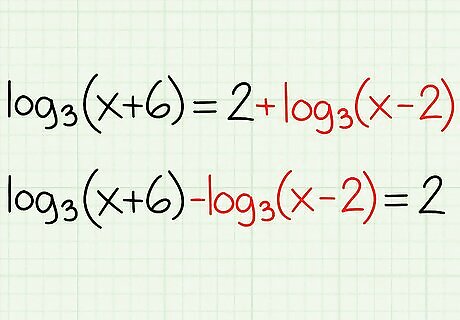
Isolate the logarithm to one side of the equation. Before you can solve the logarithm, you need to shift all logs in the equation to one side of the equal sign. The other parts of the equation should all be shifted to the opposite side of the equation. Use inverse operations to accomplish this. Example: log3(x + 6) = 2 + log3(x - 2) log3(x + 6) - log3(x - 2) = 2 + log3(x - 2) - log3(x - 2) log3(x + 6) - log3(x - 2) = 2
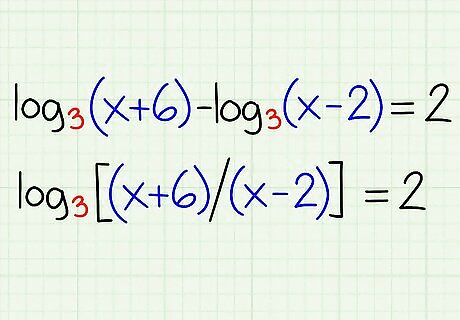
Apply the quotient rule. If there are two logarithms in the equation and one must be subtracted by the other, you can and should use the quotient rule to combine the two logarithms into one. Example: log3(x + 6) - log3(x - 2) = 2 log3[(x + 6) / (x - 2)] = 2

Rewrite the equation in exponential form. Now that there is only one logarithm in the equation, use the logarithms definition to rewrite the equation in exponential form, thereby removing the log. Example: log3[(x + 6) / (x - 2)] = 2 Comparing this equation to the definition [y = logb (x)], you can conclude that: y = 2; b = 3; x = (x + 6) / (x - 2) Rewrite the equation so that: b = x 3 = (x + 6) / (x - 2)
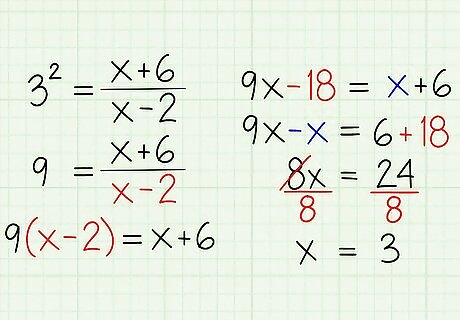
Solve for x. With the equation now in exponential form, you should be able to solve for x as you usually would. Example: 3 = (x + 6) / (x - 2) 3 * 3 = (x + 6) / (x - 2) 9 = (x + 6) / (x - 2) 9 * (x - 2) = [(x + 6) / (x - 2)] * (x - 2) 9x - 18 = x + 6 9x - x - 18 + 18 = x - x + 6 + 18 8x = 24 8x / 8 = 24 / 8 x = 3
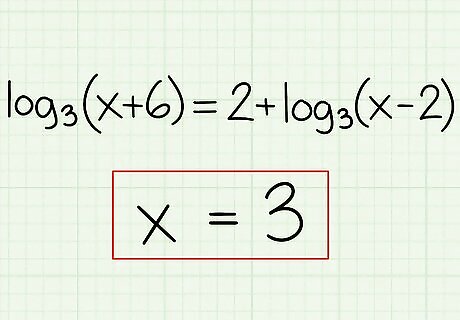
Write your final answer. Go back and double-check your steps. Once you feel certain that you have the correct solution, write it down. Example: x = 3















Comments
0 comment